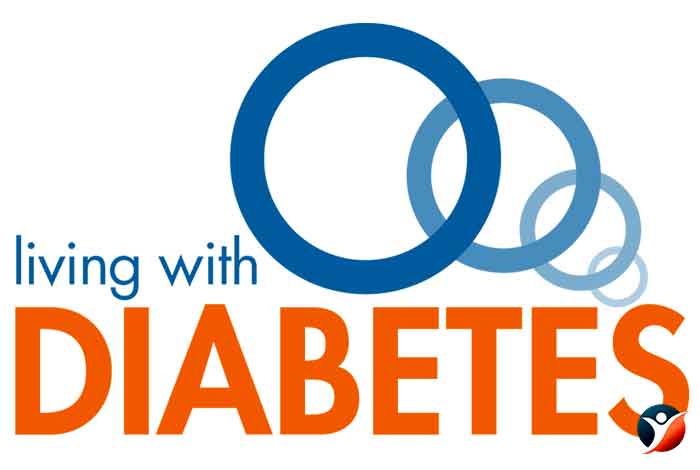
Learn to Live with Diabetes- Self Management Guide

Diabetes is increasingly becoming a global threat in the recent years and therefore people are looking for ways through which they can self-manage their blood glucose levels. Currently there are nearly 18.8 million people in the U.S. who are living with diabetes along with an additional 7 million people who have undiagnosed form of the disease.
Another alarming fact is that there are 79 million people who have blood glucose levels in the range of prediabetes or categories of increased risk for diabetes.

Thus, we can conclude that there are more than 100 million Americans who are at a high risk of developing the devastating complications of diabetes [1].
When so many people suffering from this disease, it becomes extremely important to know how to manage diabetes on a personal level so that the complications can be delayed or avoided altogether.[2] Diabetes self-management education (DSME) is an important element that deals with guidelines that guide people about how to take care of blood glucose levels. DSME contains elements that suggest how to keep a check on the blood glucose level by making certain changes in the lifestyle by people who have prediabetes and diabetes. (3,4).
Table of Content
- Treating Your Diabetes
- Learn Self-Management
- Testing Your Blood Glucose
- Good Blood Glucose Control
- When to Test Blood Glucose
- HbA1c
- Managing Diabetes through Diet
- Recommended Foods
- Foods to Avoid
- Make a Plan
- A Sample Menu
- Risks
- Exercise
- Case Study
- Conclusion
Treating your diabetes
Before developing diabetes, the pancreas in your body helped in keeping your blood glucose level in range by secreting a hormone insulin in the right amount at right time. Insulin helps the cells to take up glucose from the blood for energy production. When you develop diabetes, this ability of the body is hampered and now you have to help your body to keep blood glucose levels in check. Although you have an army of specialists who are dedicated to help you take care of your diabetes, however, all their efforts go down the drain when you yourself do not take steps to manage your condition.
Learn Self-Management

You have to make some efforts towards learning and using tools that will help you in keeping your blood glucose level in check. Merely reading about it won’t help the cause. You have to learn it by doing it. It requires a lot of time and practice. You will have to work in close association with your physician and other members of your diabetes care team. They will guide you on how to maintain the best possible blood glucose level by making use of control measures.
You can become a part of group education in order to gain more knowledge about your condition. There are a number of programs available for you to enroll into. We recommend that you should attend one such program every five years.
Testing Your Blood Glucose
People with diabetes should monitor their blood glucose regularly. You can test your blood glucose level at home by using home testing tools. There are a number of factors that can affect your blood glucose levels like medication, exercise, food and illness. Listen to your diabetes team who will guide you about target blood glucose levels, correct procedure, and how often should you check your blood glucose.
Good Blood Glucose Control

It is important to have a good control over your blood glucose because it will make you feel better in your daily life. If your blood glucose level becomes either too high or too low, you might start feeling tired, unwell and uncomfortable. You can prevent long term complications of diabetes by maintaining good blood glucose level.
There are a number of Care Centers opened by the government that help patients to successfully manage their disease.
When to test blood glucose?

Exactly when and how often to perform blood glucose test varies among individuals. It revolves around the reason you are testing your blood glucose level. If you are required to take blood glucose reading in order to adjust your diet and next insulin injection, then you are required to test before each meal and each insulin injection. You can interact with your diabetes care team regarding the best practice for you. Furthermore, if you want to make good decisions about your treatment, you should test your glucose level before and after exercise, when you feel that your glucose level is high or low due to illness. If you take insulin or medicines to keep your diabetes in check, you should always check your blood glucose level before you start operating a heavy machinery or driving.
HbA1c

HbA1c is known as the “long term test” and can only be performed by a medical professional. Through this test, you can get an idea about your blood glucose control over a period of the previous 6 -8 weeks. This is done by measuring the amount of glucose attached to hemoglobin found in red blood cells. Since red blood cells have a life span of 120 days, it gives an average idea about the blood glucose level of the past 120 days. HbA1C is a good indicator of overall control of your condition despite the odd low or high readings you might have had during that period of time.
Fill in your diary
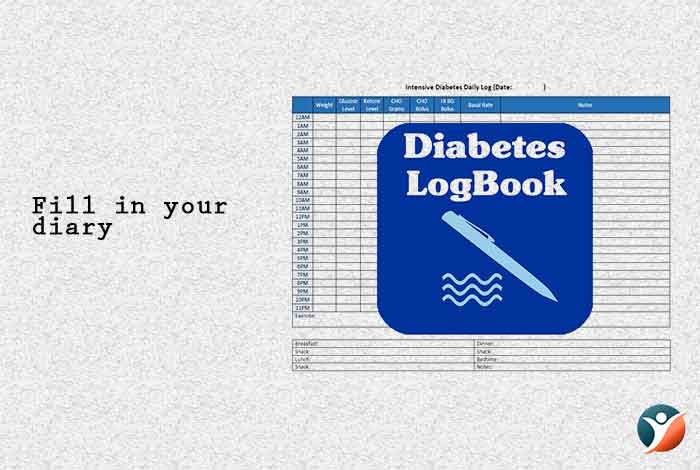
By maintaining a dairy, you can easily keep a track of your blood glucose level. You can also note in the diary the questions that you might want to ask the doctor when you go for your checkup. You can write your blood glucose readings and also make some personal notes about it. All this is valuable information for your diabetes management team as it will enable them to manage your condition more effectively.
Managing Diabetes through Diet
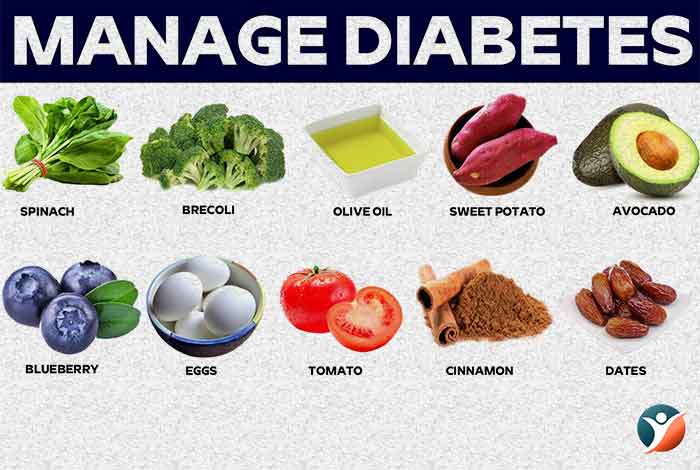
You can effectively keep your blood glucose level under check by eating a healthy diet. By consuming diabetes friendly foods and avoiding foods that cause a spike in your blood glucose level can go a long way in keeping your disease under control.
Recommended Foods
Keep your calorie intake in control by consuming these nutritious foods:
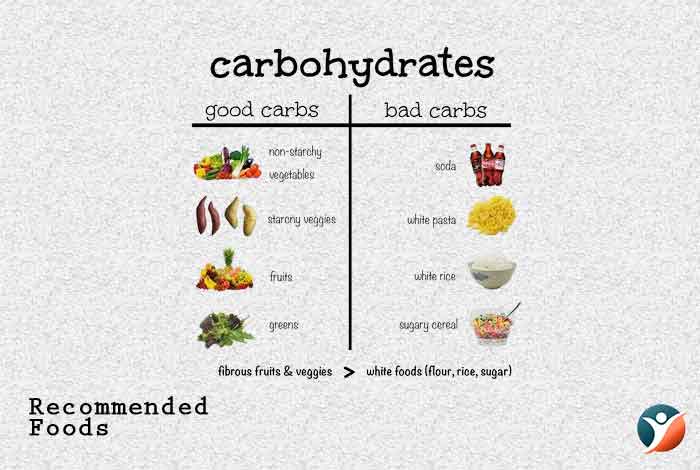
Healthy carbohydrates
At the time of digestion, starches (complex carbohydrates) and sugars (simple carbohydrates) are broken down into glucose that get absorbed in the blood. Therefore, you must focus on the type of carbohydrate that you consume. Include fruits, vegetables, legumes (beans, peas and lentils), whole grains and low-fat dairy products in your daily platter.
Fiber-Rich foods

All parts of the plant cannot be digested or absorbed by the body and these are known as dietary fiber. Fiber helps in determining how your body digests food and helps maintain blood sugar levels within normal range. Foods that are high in fiber include fruits, vegetables, whole-wheat flour, legumes (beans, peas and lentils), nuts and wheat bran.
Heart-healthy fish
Fish, that is extremely beneficial for your heart, should be consumed at least twice a week. You can consume fish as a good alternative to high-fat meats. Some of the fishes that you can consume are cod, halibut and tuna that have less total fat, cholesterol and saturated fat as compared to poultry and meat. Fishes like tuna, salmon, sardines, mackerel and bluefish have abundant amounts of omega-3 fatty acids, which are extremely useful in promoting the health of heart by decreasing the levels of blood fats called triglycerides in the body.
However, you should not consume fishes that have high levels of mercury like swordfish, tile fish and king mackerel.
Healthy Fats

Foods that are rich in mono-unsaturated and poly-unsaturated fats can help in lowering your cholesterol levels. Some of these foods include almonds, avocados, walnuts, pecans, olives, as well as peanut, canola and peanut oils. But you should not over-consume fats as they are high in calories.
Foods to Avoid
If you have diabetes, you are at a higher risk of developing heart disease and stroke as it accelerates development of hardened and clogged arteries. Foods that contain the following things can deter you from the path of consuming a heart-healthy diet:
Saturated fats
High-fat dairy products
Animal proteins like beef, hot dogs, sausage and bacon
Trans fats
Processed snacks
Baked goods
Shortening and stick margarines
Cholesterol
High-fat dairy products
High-fat animal proteins
Egg yolks
Liver
You should aim for not consuming more than 200 milligrams (mg) of cholesterol per day
Sodium
You should refrain from consuming more than 2,300 mg of sodium per day. However, hypertension is also your area of concern, then you must not have more than 1,500 mg of sodium a day.
Make a Plan
There are several approaches by which you can create a diabetes friendly diet that will help you in keeping your blood glucose level within a normal range. With the help of a dietitian, you might discover one or a combination of following methods that will work best for you:
The plate method

As per the American Diabetes Association, there is a simple 7-step method of planning meal. It focuses on consuming more vegetables on a daily basis. While preparing your plate, you should fill one-half of it with non-starchy vegetables, like carrots, spinach and tomatoes. Then fill one-quarter of your plate with protein, like lean pork or tuna. Lastly, fill the last quarter of your plate with a starchy or whole-grain item. Then, add a serving of dairy or fruit and a drink of unsweetened coffee or tea or just plain water.
Count carbohydrates

Since carbohydrates are broken down into glucose, they are known to cause the maximum effect on your blood glucose level. In order to keep your blood sugar in control, you should consume about the same amount of carbohydrates every day, at regular intervals, especially if you take diabetes medications or insulin.
A dietitian can teach you how to measure food portions and become an educated reader of food labels, paying special attention to serving size and carbohydrate content. If you’re taking insulin, he or she can teach you how to count the amount of carbohydrates in each meal or snack and adjust your insulin dose accordingly.
The exchange lists system
for-weight-loss-diet-and-a-healthy-body-pertaining-to-diabetic-exchange-list-600×479.jpg
You can make use of an exchange lists while planning your meals and diet. These lists can be organized according to categories, like carbohydrates, fats and protein sources. In each category one serving is called a “choice.” A food choice is required to have nearly the same amount of proteins, carbohydrates, fat and calories and therefore affect your blood glucose level in a similar fashion. In this way, you have a choice to choose to eat either one third cup of cooked pasta or half of a large ear of corn for one starch choice.
Glycemic index

Glycemic index can be used by some diabetic people while selecting foods to eat, especially carbohydrates. By using this approach, you can rank carbohydrate-containing foods according to their effect on blood glucose levels. You can consult your dietitian and decide whether this method will work for you or not.
A Sample Menu

Whenever you are planning your meals, consider your size and your activity level. We have given the following menu for someone who requires 1,200 to 1,600 calories each day.
Breakfast
- Whole-wheat bread (1 medium slice) with 2 teaspoons of jelly
- 1/2 cup shredded wheat cereal in a cup of 1 percent low-fat milk
- A piece of fruit
- Coffee
Lunch
- Cheese and veggie pita
- Medium apple with 2 tablespoons almond butter
- Water
Dinner
- Salmon
- 1 1/2 teaspoons vegetable oil
- Small baked potato
- 1/2 cup carrots
- Side salad (1 1/2 cups spinach, 1/4 cup chopped bell pepper, 1/2 of a tomato, 2 teaspoons olive oil, 1 1/2 teaspoons red wine vinegar)
- Unsweetened iced tea
Snack
-
- 2 1/2 cups popcorn or an orange with 1/2 cup 1% low-fat cottage cheese
Risks
If you are a diabetic, it is important that you are in constant touch with your doctor and dietitian in order to create a diet chart that is tailor made for you. Include healthy foods, apply portion control and stick to a schedule in order to keep your blood glucose levels in check. If you do not follow the diet prescribed by the dietitian, you automatically run a high risk of developing an unstable blood glucose level that can have serious complications.
Exercise
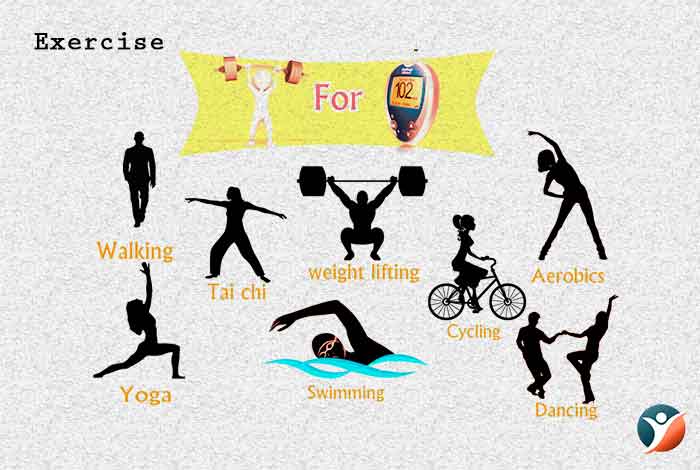
In order to keep your blood glucose level in check, you need to exercise regularly. You can follow these tips to stay safe while exercising:
Keep a log
Make use of an exercise log book to keep a track of your exercise routine and your blood glucose level before and after workout.
Stay hydrated
Drink a lot of water before, during, and after workout as it is extremely necessary to decrease your risk of developing dehydration caused by erratic blood glucose levels and heat stroke.
Warm up and cool down
The ADA recommends that you should indulge in a warm up session of 5 to 10 minutes of aerobic activity (cycling, walking etc.) at a low-intensity along with gentle stretching for an extra 5 to 10 minutes. Along with that, you should also have a cool-down session of 5 to10 minutes until you heart rate becomes normal.
Dress Properly
When you are exercising, make sure that you wear well-fitting shoes and socks that are breathable and weather-appropriate. Make sure that you do not develop foot problems or get a heat stroke. You can visit your podiatrist before beginning an exercise program.
Breathe normally
When you do strength training, try not to hold your breath, as it can adversely affect your blood pressure and make you feel lightheaded. Make sure that you visit your doctor and get medical clearance before starting strength or resistance training.
Start slow
If you have recently started an exercise regimen, make sure that you start by going easy on yourself. Gradually, increase the tempo and build up your stamina.
Save your breath
It is common to have a slight shortness of breath during cardio training. But if you labor to catch your breath, it is not correct. While exercising, you should be able to carry on a conversation.
Carry a phone
When exercising outdoors, make sure you must have access to emergency medical service via a cell phone or other means of communication.
Case Study

There are a number of celebrities who struggle with diabetes but have been successful on keeping their blood glucose level in check through exercise, diet and making certain changes in their lifestyles.
Sherri Shephard
Sherri Shephard is a comedian and host, who was diagnosed with type II diabetes in 2007. Like many of us, she continued to ignore her physician’s suggestions and warnings when she was diagnosed with prediabetes.
IN the beginning, she was prescribed 3 different medicines to keep a control on her diabetes. However, then she realized that if she exercised regularly, controlled her diet and lost weight, she was able to keep a check on her blood glucose level without the use of medicines. When asked, Shephard said that she turned her home into a mini gym and exercised at every opportunity he got. This helped her in keeping her blood glucose level in control.
Shephard wanted to inspire everyone else with her journey and therefore wrote a book about living with diabetes, titled “Plan D: How to Lose Weight and Beat Diabetes (Even if You Don’t Have It).”
Conclusion
Embracing a healthy-eating plan is one of the most suited ways to keep your blood sugar level under control and keep complications of diabetes at bay. If it is required that you lose weight, then you should adopt means to tailor your weight as required.
It is possible to lead a healthy life with diabetes. All it requires is a little dedication and effort from your side.




